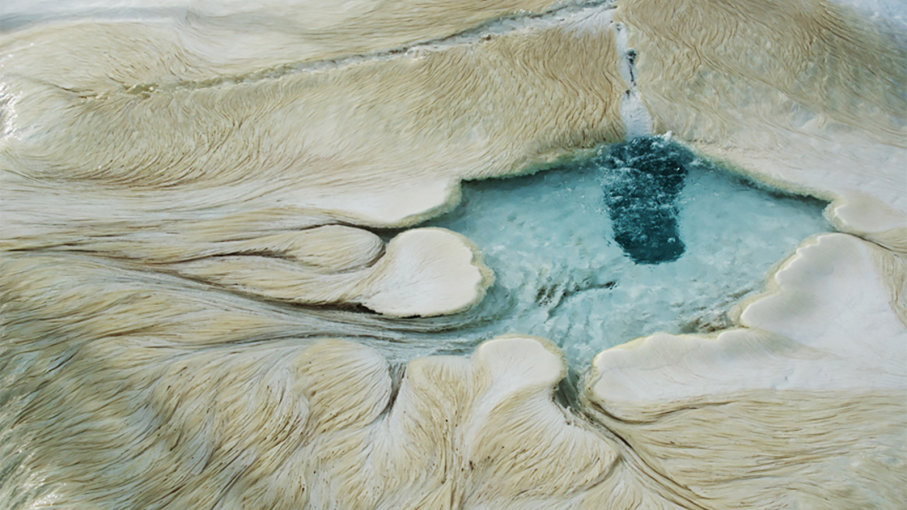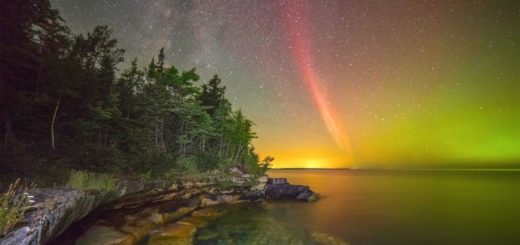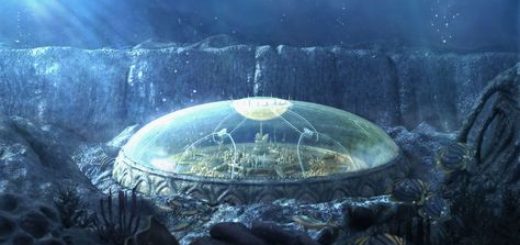Fettuccine Rock Could Signal Life on Mars

“Fettucine rocks!” might sound like an advertising slogan for an Italian restaurant chain. But actually, the term fettucine rock doesn’t refer to a tasty pasta dish, but rather to a geological phenomenon that scientists believe might provide an obvious sign of life on the planet Mars, if it exists there.
The rocks in question are found on Earth in places such as Mammoth Hot Springs in Yellowstone National Park. They’re yellowish and contain crystalline formations that resemble layers of pasta, as researchers report in an article published recently in the scientific journal Astrobiology, and described in this University of Illinois press release.
The interesting thing about the rocks is that their formation is controlled by a bacterium, Sulfurihydrogenibium yellowstonense, that evolved 2.35 billion years ago, which was before the oxygenation of the Earth’s atmosphere. Sulfuri microbes, as the scientists call them for short, are capable of surviving in environments with extremely low oxygen levels, by utilizing sulfur and carbon dioxide (which contains oxygen) as energy sources. The microbes also can withstand exposure to ultraviolet light and extreme heat.
“Taken together, these traits make it a prime candidate for colonizing Mars and other planets,” explained Bruce Fouke, a professor in geology and microbiology at the Carl R. Woese Institute for Genomic Biology at the University of Illinois Urbana-Champaign, in the press release.
“If we see the deposition of this kind of extensive filamentous rock on other planets, we would know it’s a fingerprint of life,” Fouke said. “It’s big and it’s unique. No other rocks look like this. It would be definitive evidence of the presences of alien microbes.”
The distinctive pasta-shaped crystalline formations that sulfuri microbes form would make it fairly easy to spot visually on other planets. That’s why future Mars missions will certainly be keeping an eye out for it.
fettuccine rock
In fast-flowing hot springs, such as this one in Yellowstone, the “Sulfuri” microbe assembles itself into pasta-like strands and promotes the crystallization of calcium carbonate rock along its surfaces.
TOM MURPHY



 Creators of mankind
Creators of mankind Description of “Tall white aliens”
Description of “Tall white aliens” Where they came from?
Where they came from? About hostile civilizations
About hostile civilizations The war for the Earth
The war for the Earth “Tall white aliens” about eternal life
“Tall white aliens” about eternal life Video: “Nordic aliens”
Video: “Nordic aliens” Aliens
Aliens Alien encounters
Alien encounters The aliens base
The aliens base UFO
UFO Technology UFO
Technology UFO Underground civilization
Underground civilization Ancient alien artifacts
Ancient alien artifacts Military and UFO
Military and UFO Mysteries and hypotheses
Mysteries and hypotheses Scientific facts
Scientific facts


















